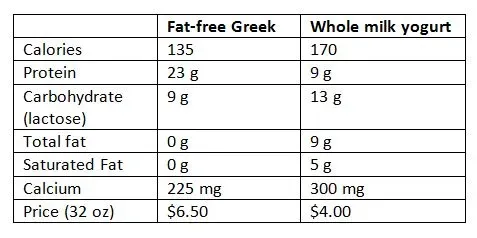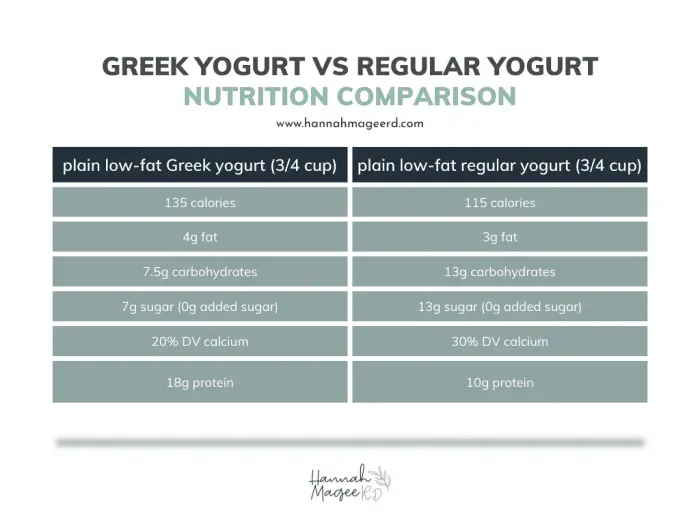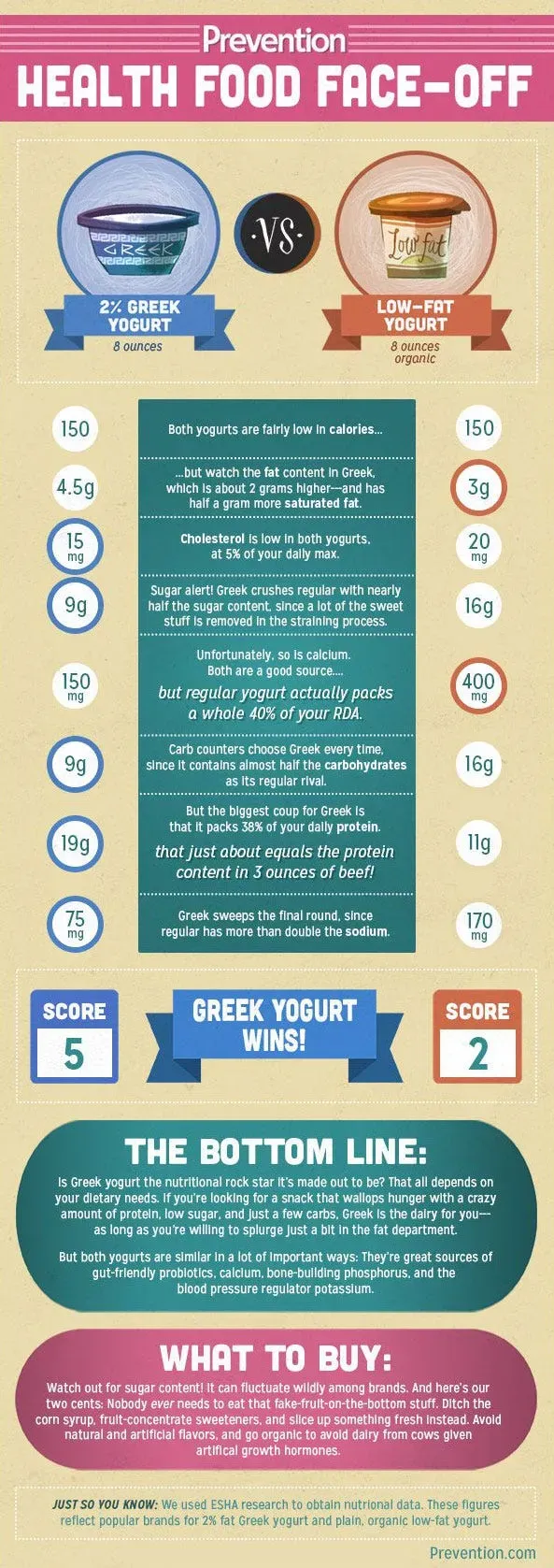Table of Contents
Walk down the dairy aisle these days, and you're faced with more options than ever. Among the sea of containers, two types often stand out, sparking a common debate: low fat yogurt vs greek yogurt. For years, low-fat versions were the go-to for anyone watching their waistline, lauded as the healthier choice. Then came Greek yogurt, thick, tangy, and suddenly everywhere, promising more protein and somehow feeling more substantial. It left many of us scratching our heads, wondering if our long-held beliefs about low fat were outdated. Is the creamy, protein-packed newcomer truly superior, or does the classic low fat still hold its own? It's not just about taste; the nutritional profiles differ significantly, impacting everything from how full you feel to your overall nutrient intake. Deciding between low fat yogurt vs greek yogurt depends on your personal health goals and what you're looking for in your snack or meal. Let's cut through the marketing hype and look at what's really inside those tubs so you can make an informed choice.
Low Fat Yogurt vs Greek Yogurt: A Nutritional Breakdown

Low Fat Yogurt vs Greek Yogurt: A Nutritional Breakdown
The Straining Game: How They Get Different
When you line up low fat yogurt vs greek yogurt, the first thing to understand is the fundamental difference in how they're made. Regular yogurt, including the low-fat kind, starts with milk fermented by bacteria. It's a pretty straightforward process. Greek yogurt takes it a step further. After fermentation, it gets strained multiple times. This intense straining removes a lot of the liquid whey, which is the watery part of milk. What's left behind is that thick, creamy consistency everyone talks about. But this isn't just about texture; that straining significantly alters the nutritional profile. Less whey means less lactose (a natural sugar) and fewer carbohydrates overall. It also concentrates the protein, which is why Greek yogurt often feels like a more substantial snack.
Protein Power Play: Where Greek Yogurt Shines
Let's talk protein because this is where the low fat yogurt vs greek yogurt comparison gets interesting, especially for those focused on muscle recovery or feeling full. Due to the straining process, Greek yogurt packs a serious protein punch. A typical serving can have double the protein of regular low-fat yogurt. This isn't some marketing gimmick; it's simple concentration. More protein means it takes longer to digest, helping you feel satisfied and less likely to raid the snack cupboard an hour later. If you're hitting the gym or just trying to manage your appetite, that extra protein can make a real difference in your day-to-day eating habits.
Nutrient (approx. per 100g plain) | Low Fat Yogurt | Plain Greek Yogurt (Low Fat) |
|---|---|---|
Calories | 60-70 | 70-80 |
Protein (g) | 5-6 | 10-11 |
Carbohydrates (g) | 7-8 | 3-4 |
Sugar (g) | 7-8 | 3-4 |
Fat (g) | 1-2 | 1-2 |
Beyond Protein: Carbs, Sugar, and That Tang
While protein is a major point, looking at carbs and sugar in low fat yogurt vs greek yogurt is crucial. Remember that straining? It pulls out a good chunk of the naturally occurring lactose. This means Greek yogurt generally has fewer carbohydrates and less sugar than its low-fat counterpart, assuming both are plain and unsweetened. If you're watching your sugar intake or following a lower-carb approach, this is a significant factor. The tangier flavor of Greek yogurt also comes partly from this process. Regular low-fat yogurt, with more lactose, tends to be milder and sometimes sweeter even before sugar is added. Always check the label, though, because flavored versions of either can load up on added sugars, completely changing the nutritional picture.
Protein Power: Why Greek Yogurt Often Wins the Low Fat Yogurt vs Greek Yogurt Battle

Protein Power: Why Greek Yogurt Often Wins the Low Fat Yogurt vs Greek Yogurt Battle
The Unfair Protein Advantage
Let's be blunt: when you pit low fat yogurt vs greek yogurt on the protein front, it's almost not a fair fight. Greek yogurt consistently delivers significantly more protein per serving. Think of it like squeezing a whole orange for juice versus just a slice – you get a lot more concentrated goodness from the Greek version. This isn't magic; it's the result of that rigorous straining process we talked about earlier. The watery whey, which is lower in protein, gets removed, leaving behind a denser, protein-rich product. If your main goal is to bump up your protein intake without adding a ton of extra calories or sugar, Greek yogurt steps onto the stage and pretty much steals the show.
Feeling Full, Staying Strong
That higher protein count in Greek yogurt isn't just a number on a nutrition label; it translates into real-world benefits. Protein is king when it comes to satiety – that feeling of being full and satisfied after eating. When you eat protein, it takes longer for your body to digest compared to carbs or fats alone. This means a serving of Greek yogurt can help curb those mid-morning munchies or keep you going between meals far more effectively than a similar amount of regular low-fat yogurt. For anyone trying to manage their weight or simply avoid the energy crash that comes after a sugary snack, this is a major win. Plus, that protein is essential for muscle repair and growth, making Greek yogurt a favorite among athletes and active individuals.
- Feeling hungry soon after eating? More protein helps.
- Hitting the weights? Muscles need protein to recover.
- Trying to cut back on snacks? Protein keeps you satisfied longer.
Comparing the Punch
To put it in perspective, a standard 5 or 6-ounce container of plain low-fat yogurt might offer around 5 to 8 grams of protein. Grab a similar-sized container of plain Greek yogurt, and you're typically looking at 12 to 18 grams, sometimes even more. That's a substantial difference for the same volume. Imagine adding that to your breakfast or having it as an afternoon snack – you're getting the protein equivalent of a small chicken breast in a convenient, spoonable form. While low-fat yogurt certainly isn't protein-free, it simply can't compete with the concentrated power found in its strained cousin when focusing purely on this macronutrient.
Fat, Sugar, and Carbs: Comparing Low Fat Yogurt vs Greek Yogurt

Fat, Sugar, and Carbs: Comparing Low Fat Yogurt vs Greek Yogurt
The Sweet and the Lean
let's dig into the nitty-gritty of fat, sugar, and carbs when you're sizing up low fat yogurt vs greek yogurt. Remember that heavy-duty straining Greek yogurt goes through? It's not just siphoning off liquid; it's also significantly reducing the lactose content. Lactose is a sugar found naturally in milk, and since less whey means less lactose, plain Greek yogurt ends up with notably fewer grams of sugar and carbohydrates compared to plain low-fat yogurt. This is a big deal if you're trying to manage blood sugar levels or simply prefer less sweetness without added junk. As for fat, the "low fat" label on both means they've had most of the milk fat removed, so they're usually pretty close on this front, typically hovering around 1-2 grams per serving. But seriously, always flip the container over and check the nutrition facts yourself; it's the only way to know exactly what you're getting, especially with all the flavored varieties out there that can sneak in spoonfuls of added sugar.
Beyond the Numbers: Texture, Taste, and Uses for Low Fat Yogurt vs Greek Yogurt

Beyond the Numbers: Texture, Taste, and Uses for Low Fat Yogurt vs Greek Yogurt
Stepping away from the charts and figures, let's talk about the actual eating experience, because texture and taste are huge factors when deciding between low fat yogurt vs greek yogurt. Regular low-fat yogurt is typically thinner, with a consistency closer to traditional unstrained yogurt, maybe a bit more liquidy depending on the brand. It tends to be milder in flavor, often with a noticeable sweetness even in the plain versions due to higher lactose. This makes it perfectly fine for pouring over granola or blending into smoothies where you don't need that thickness. Greek yogurt, on the other hand, is undeniably thick – spoon-bendingly thick sometimes – thanks to all that straining. This density gives it a rich, almost dessert-like mouthfeel, and its flavor is distinctly tangier, sometimes even a bit sour, which some people love and others find needs a touch of sweetness. This thickness makes Greek yogurt a fantastic stand-in for sour cream in savory dishes, a base for dips, or something substantial enough to eat with just a spoon and feel like you've had a proper snack.
Your Questions Answered: FAQs About Low Fat Yogurt vs Greek Yogurt

Your Questions Answered: FAQs About Low Fat Yogurt vs Greek Yogurt
Is One Definitely "Healthier" Than The Other?
so after looking at the numbers, you might be thinking, "Just tell me which one is healthier!" And honestly, it's not a simple black and white answer when comparing low fat yogurt vs greek yogurt. If your main goal is maximizing protein intake for muscle building or staying full, Greek yogurt generally has the edge. Its higher protein count is hard to beat in the yogurt world. However, if you're really focused on calcium intake, some regular low-fat yogurts can actually contain slightly more, though many Greek brands now fortify theirs. And if you just prefer the taste and texture of regular low-fat yogurt and it helps you get a serving of dairy and probiotics you otherwise wouldn't, then that's a win too. The "healthier" choice really boils down to what nutrients matter most to you and which one you'll consistently eat without it feeling like a chore.
What About All That Added Sugar in Flavored Types?
This is a critical point often missed in the low fat yogurt vs greek yogurt debate. While plain versions have natural sugars (lactose), the flavored tubs are where things can get dicey. Manufacturers often dump significant amounts of added sugar into both low-fat and Greek yogurts to make them more palatable, sometimes turning a seemingly healthy snack into something closer to dessert. You might see 15-20 grams or more of sugar in a small container, and a big chunk of that is added sugar, not the natural stuff. This pretty much negates any advantage one might have over the other based on natural sugar content. Always, always check the ingredients list and the nutrition facts panel for added sugars. Choosing plain and adding your own fruit or a tiny bit of honey gives you control.
- Check "Added Sugars" on the nutrition label.
- Plain yogurt (low-fat or Greek) is usually the better starting point.
- Add fresh fruit for natural sweetness and fiber.
- A small drizzle of honey or maple syrup is better than a tub of sugary fruit-on-the-bottom.
- Vanilla flavor often means added sugar, even if it seems simple.
Can I Use Greek Yogurt Instead of Regular Low-Fat in Recipes?
Absolutely, and often with great results! The thick texture of Greek yogurt makes it a fantastic substitute for higher-fat ingredients in cooking and baking. You can swap it one-to-one for sour cream in dips, dolloped on chili, or mixed into sauces for a protein boost and tangy flavor with less fat. It also works well in baking to add moisture and tenderness to muffins or cakes, though you might need to adjust other liquid ingredients slightly due to its thickness. Using Greek yogurt instead of regular low-fat in smoothies will give you a creamier texture and a bigger protein hit. Just remember its distinct tang is stronger than regular low-fat yogurt, so consider if that flavor profile fits your dish. Experimenting is key here; don't be afraid to swap it in and see how it works!
So, Low Fat Yogurt vs Greek Yogurt: Which Tub Wins?
Alright, we've sliced and diced the numbers on low fat yogurt vs greek yogurt. Greek yogurt typically packs a bigger protein punch and often has less sugar and carbs due to that extra straining. This density makes it a heavyweight champion for satiety, potentially keeping those snack cravings at bay longer than its less viscous low fat cousin. Low fat yogurt, while lower in total fat, often carries more sugar to compensate for lost flavor and texture. It’s lighter on the palate, sure, but maybe also lighter on the nutritional impact you were hoping for. The "better" choice isn't a universal truth etched in stone. If maximum protein and a thicker texture are your priority, Greek yogurt likely gets your vote. If you're strictly counting total fat grams above all else, or prefer a runnier consistency for pouring, low fat might still appeal. Just remember to check the sugar content on both; some flavored versions turn a healthy-sounding snack into a sugar bomb.
